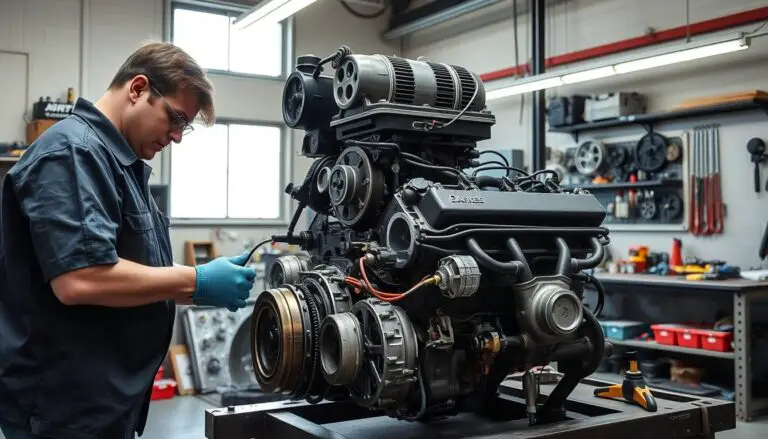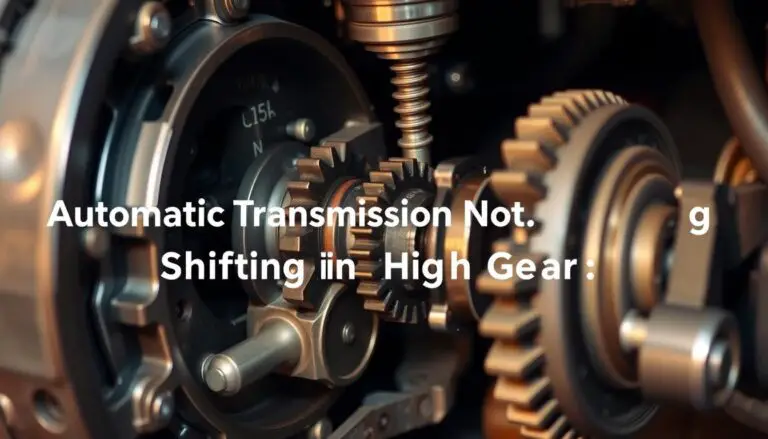Static electricity can be a nuisance for car owners, causing uncomfortable shocks when exiting or entering the vehicle. The buildup of static electricity is primarily due to friction between the vehicle’s surfaces and air molecules. This issue can be effectively addressed with the right measures.
Using an anti-static strap is a practical solution. These straps, made from conductive materials, are attached to the vehicle’s frame and grounded to dissipate static electricity, thus preventing shocks.
Key Takeaways
- Understand the causes of static electricity in cars.
- Learn about effective methods for preventing static shocks.
- Discover the benefits of using an anti-static strap.
- Find out how to properly install and maintain an anti-static strap.
- Reduce the risk of static shocks with simple, practical steps.
Understanding Static Electricity in Vehicles
Understanding static electricity is key to eliminating it from your vehicle. Static electricity in vehicles occurs due to the friction between different materials, such as clothing and car seats, or between the car’s interior components.
What Causes Static Buildup in Cars
Static buildup is primarily caused by friction between different materials. When you get in and out of your car, the friction between your clothing and the car seat can generate static electricity. Additionally, the dry air inside the car, especially during winter months, exacerbates this issue.
Why Winter and Dry Conditions Increase Static
Dry conditions, particularly in winter, increase the likelihood of static shock. Low humidity allows static electricity to build up more easily because there’s less moisture in the air to dissipate the charge.
Common Misconceptions About Car Static
Many believe that static shock is harmless, but it can be a sign of a larger issue. Some also think that static only occurs when getting in or out of the car, but it can happen at any time due to various factors.
| Cause | Effect | Prevention Method |
|---|---|---|
| Friction between materials | Static buildup | Anti-static products |
| Dry air | Increased static shock | Humidifiers |
How to Stop Static Shock from Car: The Science Behind the Solutions
To effectively stop static shock from your car, it’s essential to comprehend the science that drives this phenomenon. Static electricity is a common issue in vehicles, particularly during dry weather conditions. Understanding its causes and effects is crucial for finding a lasting solution.
The Physics of Static Electricity in Vehicles
Static electricity in cars is generated through the friction between different materials, such as clothing and car seats, or between the car’s interior components. This friction causes a transfer of electrons, resulting in a buildup of static electricity. The key to eliminating static shock lies in understanding and managing this buildup.
Identifying Your Car’s Static Hotspots
To tackle static shock, it’s vital to identify the areas in your car where static is most prevalent. Common hotspots include the door handles, seat belts, and steering wheel. Observing when and where static shocks occur can help you pinpoint these areas.
Measuring Static Levels in Your Vehicle
While specialized equipment can measure static levels, a simple method is to observe the frequency and intensity of static shocks. You can also use an electrostatic field meter to quantify the static electricity. Understanding the level of static in your car aids in evaluating the effectiveness of anti-static measures.
| Static Level | Symptoms | Solution |
|---|---|---|
| Low | Occasional mild shocks | Anti-static products |
| Moderate | Frequent shocks, noticeable static | Anti-static sprays, proper exit techniques |
| High | Persistent strong shocks | Installing a static strap or discharge strip |
As
“The best way to predict the future is to invent it.” – Alan Kay
, understanding and managing static electricity in your car is the first step towards a static-free driving experience.
Quick Fixes for Immediate Static Relief
Don’t let static electricity ruin your day; there are simple ways to get immediate relief. Static shock can be a jarring experience, but with the right techniques, you can minimize its impact.
The Key Chain Touch Method
One of the simplest ways to discharge static electricity is by using your keychain to touch the metal part of your car before exiting. This method allows the static to be discharged through the metal, preventing a shock. For more detailed guides on stopping static shock, you can visit this resource.
Proper Exit Techniques to Avoid Shocks
How you exit your vehicle can significantly impact whether you receive a static shock. Here are some tips:
- Make sure to touch a metal part of the car frame as you exit.
- Avoid sliding across the seat, as this generates more static.
Hand Placement When Leaving Your Vehicle
Place your hand on the metal door frame or another metal surface as you exit to discharge static electricity safely.
Body Positioning to Discharge Static Safely
Maintain a posture that allows you to touch metal parts of the car as you exit. This can help in gradually discharging the static buildup.
Emergency Anti-Static Sprays and Solutions
For immediate relief, consider using anti-static sprays or solutions designed for vehicles. These products can help reduce static electricity.
| Method | Description | Effectiveness |
|---|---|---|
| Key Chain Touch | Discharge static using a keychain | High |
| Proper Exit Techniques | Avoid generating static while exiting | High |
| Anti-Static Sprays | Use sprays to reduce static electricity | Medium |
Long-Term Solutions to Prevent Static Buildup
Preventing static buildup in your vehicle involves understanding its causes and applying effective, long-lasting solutions. To achieve this, you can utilize anti-static products, choose the right materials for your car’s interior, and consider installing static-reducing devices.
Anti-Static Products for Your Car Interior
Using anti-static products is a straightforward way to reduce static electricity in your car. These products are designed to neutralize static charges on various surfaces.
Sprays and Treatments for Upholstery
Anti-static sprays and treatments can be applied directly to your car’s upholstery to reduce static cling. These products are typically easy to use and provide long-lasting results.
Anti-Static Wipes for Dashboard and Controls
Anti-static wipes are convenient for daily use on surfaces like the dashboard and controls. They help maintain a static-free environment inside your vehicle.
Seat Covers and Materials That Reduce Static
Choosing the right seat covers and materials can significantly reduce static buildup. Materials that are less prone to generating static electricity include cotton, wool, and certain synthetic fabrics treated with anti-static properties.

Installing a Static Strap or Discharge Strip
A static strap or discharge strip can be an effective solution for discharging static electricity from your vehicle. These devices can be installed in various locations, depending on your car’s design.
DIY Installation Guide
For those comfortable with DIY projects, installing a static strap or discharge strip can be a relatively simple process. It involves identifying the right location for the device and following the manufacturer’s installation instructions.
Professional Installation Options
If you’re not confident in your ability to install a static strap or discharge strip yourself, consider consulting a professional. Many auto electricians or car detailers offer installation services for such devices.
| Solution | Description | Installation |
|---|---|---|
| Anti-Static Sprays | Reduces static on upholstery | Easy DIY application |
| Anti-Static Wipes | Daily use on dashboard and controls | Simple wiping action |
| Static Strap/Discharge Strip | Discharges static electricity | DIY or Professional |
Humidity Control and Its Effect on Static Electricity
One effective way to minimize static shock in cars is by managing the humidity levels. Static electricity is significantly influenced by the ambient humidity, with dry conditions exacerbating static buildup.
Using Car Humidifiers to Reduce Static
Car humidifiers can play a crucial role in maintaining optimal humidity levels, thereby reducing static electricity. By ensuring the air is not too dry, humidifiers help prevent the buildup of static charges.
Seasonal Adjustments for Static Prevention
Seasonal changes can significantly impact the humidity levels inside your car. During dry winter months, using a humidifier can help maintain a stable humidity level, reducing static electricity.
Natural Humidity Solutions for Your Vehicle
For those looking for alternatives to electronic humidifiers, natural methods can also be effective. Leaving a damp cloth inside the car or using a water-based air freshener can help maintain humidity levels.
By implementing these humidity control strategies, you can significantly reduce the occurrence of static shock in your vehicle, making your driving experience more comfortable.
Clothing and Accessory Choices That Minimize Static Shock
Your daily choices, from the fabrics you wear to the accessories you carry, can play a crucial role in minimizing static electricity in your vehicle. By making informed decisions about your clothing and personal items, you can significantly reduce the occurrence of static shock.
Fabrics That Generate Less Static
Choosing the right fabrics can help reduce static buildup. Natural fibers like cotton and wool tend to generate less static compared to synthetic materials like polyester and nylon. When possible, opt for clothing made from natural fibers to minimize static electricity.
Additionally, consider the clothing’s weave and thickness. Tighter weaves and thicker fabrics tend to produce less static. For instance, cotton jeans are generally less likely to cause static shock than nylon leggings.
Footwear Considerations for Reducing Static
The type of footwear you wear can also impact static electricity. Shoes with leather soles are preferable to those with rubber soles, as leather is more conductive and can help discharge static electricity. Avoid wearing shoes with synthetic soles, as they can exacerbate static buildup.
Anti-Static Personal Accessories for Drivers
Using anti-static personal accessories can further reduce static shock. Consider using anti-static keychains or wrist straps designed to discharge static electricity. These accessories can be particularly useful for individuals who frequently experience static shock.
| Accessory | Description | Effectiveness |
|---|---|---|
| Anti-Static Keychain | Discharges static electricity when touching metal parts | High |
| Anti-Static Wrist Strap | Grounds the wearer, preventing static buildup | Very High |
| Leather-Soled Shoes | More conductive than synthetic soles, reducing static | Moderate |

Electronic and Smart Solutions for Static Prevention
The integration of electronic and smart solutions is revolutionizing the way we approach static prevention in cars. As vehicles become increasingly sophisticated, leveraging technology to mitigate static shock is a logical next step.
Ionizers and Air Purifiers That Reduce Static
Ionizers and air purifiers are not just beneficial for air quality; they also play a role in reducing static electricity. By altering the ionic composition of the air, these devices can decrease the buildup of static charges. Some car air purifiers come equipped with ionizers that release negative ions, which can neutralize static electricity.
Smart Car Accessories for Static Control
Smart car accessories are designed to make driving more comfortable and safer. Some of these accessories are specifically engineered to reduce static shock. For instance, certain seat covers are made with materials that dissipate static electricity, while others integrate conductive threads that ground the static charge.
Future Technologies in Static Prevention
The future of static prevention in vehicles looks promising, with emerging technologies poised to make significant impacts. Researchers are exploring advanced materials and technologies, such as graphene and nanotechnology, to develop more effective static-reducing solutions. As these technologies mature, we can expect to see innovative products that further minimize static shock in cars.
| Technology | Description | Benefit |
|---|---|---|
| Ionizers | Release negative ions to neutralize static | Reduces static shock |
| Smart Seat Covers | Materials that dissipate static electricity | Prevents static buildup |
| Nanotechnology | Advanced materials for static reduction | Future-proof static prevention |
Conclusion
Static electricity prevention is crucial for a comfortable and safe driving experience. By understanding the causes of static buildup in cars and implementing the right solutions, drivers can eliminate the annoyance of car static shock.
The strategies outlined in this guide, from quick fixes like the key chain touch method to long-term solutions such as anti-static products and humidity control, provide a comprehensive approach to static electricity prevention.
By incorporating these methods into daily driving habits, individuals can significantly reduce the occurrence of static shock. This not only enhances the driving experience but also contributes to a safer interaction with the vehicle’s electronic systems.
As technology continues to evolve, the integration of smart car accessories and future technologies will further aid in car static shock prevention. For now, applying the discussed techniques will make a significant difference.
FAQ
What causes static shock in cars?
Static shock in cars is caused by the buildup of static electricity, often due to friction between clothing and car seats, or between different parts of the vehicle’s interior. This static electricity can discharge when you touch a conductive object, such as the car’s metal door handle.
Why does static shock occur more frequently in dry conditions?
Dry air is a poor conductor of electricity, allowing static electricity to build up more easily. In humid conditions, the moisture in the air helps to dissipate static electricity, reducing the likelihood of static shock.
How can I identify static hotspots in my vehicle?
To identify static hotspots, get in and out of your car while paying attention to when and where you experience static shock. You can also use a static meter to measure static levels in different areas of your vehicle.
Are anti-static sprays effective in reducing static shock?
Anti-static sprays can be effective in reducing static shock by dissipating static electricity. However, their effectiveness may vary depending on the product and the specific conditions in your vehicle.
Can I install a static strap or discharge strip myself?
Yes, you can install a static strap or discharge strip yourself, but it’s recommended to follow the manufacturer’s instructions and take necessary safety precautions. If you’re unsure, consider consulting a professional.
How do car humidifiers help reduce static electricity?
Car humidifiers add moisture to the air, which helps to dissipate static electricity, reducing the likelihood of static shock.
What types of fabrics generate less static?
Natural fibers like cotton, wool, and silk tend to generate less static than synthetic fibers like polyester and nylon.
Can certain footwear reduce static shock?
Yes, wearing shoes with conductive soles or anti-static properties can help reduce static shock by dissipating static electricity from your body.
Are there any smart car accessories that can help control static?
Yes, there are smart car accessories, such as ionizers and air purifiers, that can help reduce static electricity in your vehicle.
How can I measure static levels in my vehicle?
You can use a static meter to measure static levels in your vehicle. These devices can help you identify areas with high static electricity.
What are some long-term solutions to prevent static buildup?
Long-term solutions include using anti-static products, installing a static strap or discharge strip, and maintaining optimal humidity levels in your vehicle.


